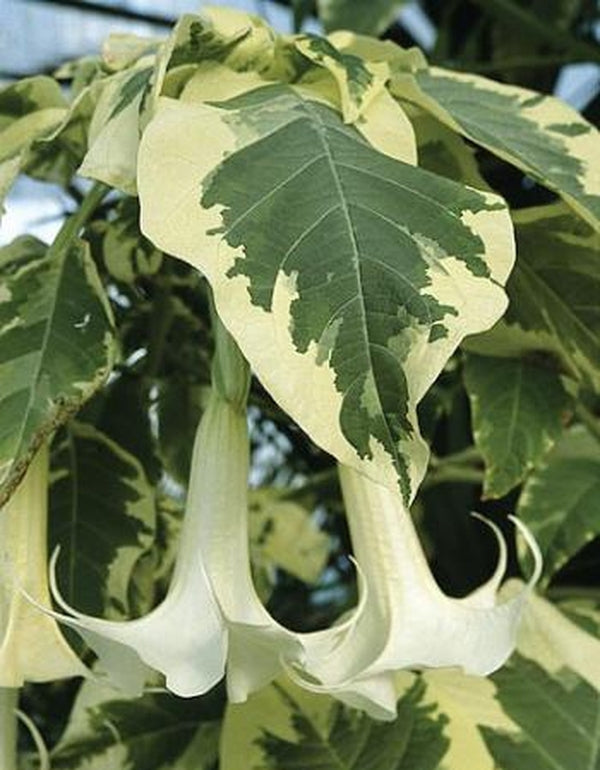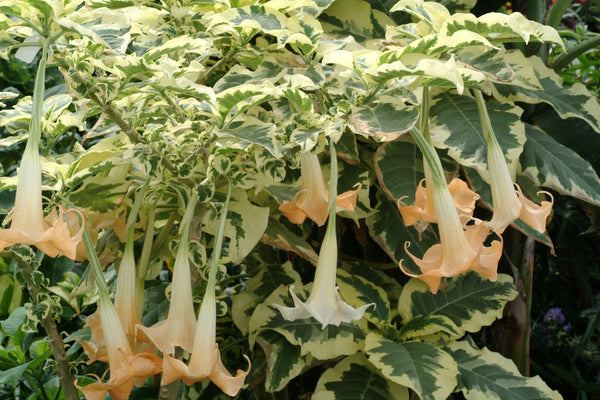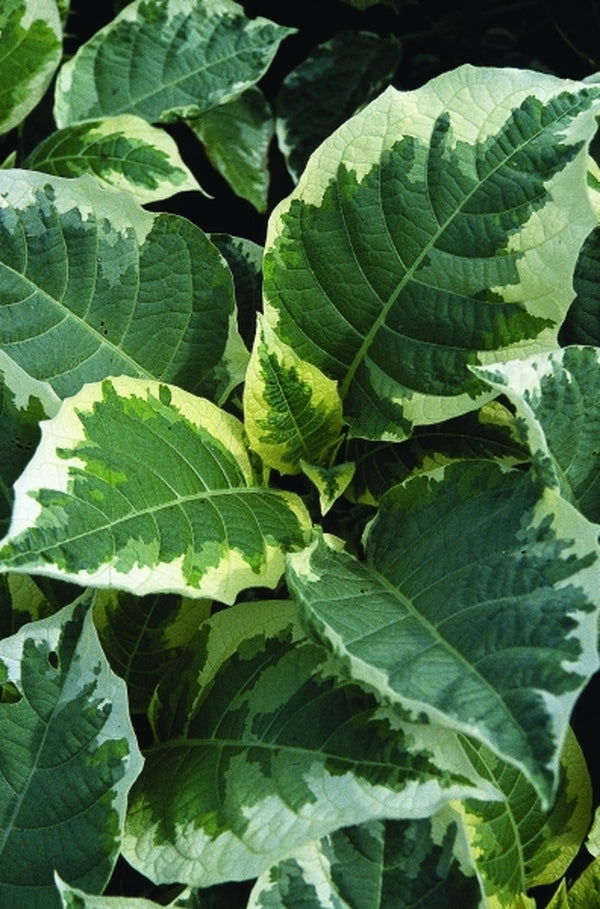Brugmansia 'Snowbank'
Snowbank Variegated Angel Trumpet
Item #: 5088
Zones: 7b to 10b
Dormancy: Winter
Height: 60" tall
Origin: Hybrid
(USPP 14,817 expired) Oh, my! Every now and then a new plant comes along so stunning it makes you fall to your knees and weep. Actually, we do that when we back into our spiny plants, but that's another matter. This Terra Nova angel trumpet introduction is a tetraploid version of the popular Brugmansia 'Sunset'. The huge, tricolor variegated leaves are dark green in the center, with narrow blotches of light grey-green toward the edge, surrounded by a 1" wide creamy white border. The 60" tall deer-resistant clumps are adorned with huge, fragrant, flowers that open creamy white (occasionally with a yellow blush), then finish with a light peach blush. The flowers dangle from the branches in midsummer and again in late summer. AMAZING!
Maintenance:
Brugmansia 'Snowbank' is a very low maintenance perennial. We do not recommend doing anything in the fall when they are grown in the ground. Any cleanup of old stalks is best done in spring prior to re-emergence, since the plant needs these old stems and leaves for winter protection.
In colder climates, where angel trumpets aren't winter hardy, cut some canes in fall and store them overwinter in a bucket of moist peat moss, which can be kept above freezing.
Growing Conditions:
In the garden, angel trumpets prefer well-drained soil and light levels from very tall, open shade to several hours of full sun, depending on the intensity of the summer heat in your area.
Brugmansias can also be grown in containers, but they have an extensive root system to pick up enough moisture for the large leaves, so you'll need a large container and the ability to provide plenty of moisture several times a day.
Natural Impacts:
Angel trumpets are typically pollinated by hummingbirds and their insect counterpart, hawkmoths.
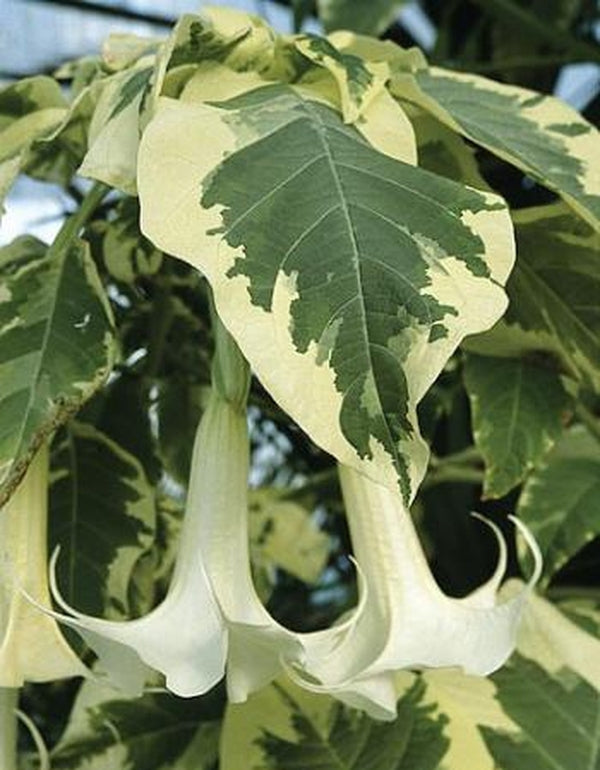
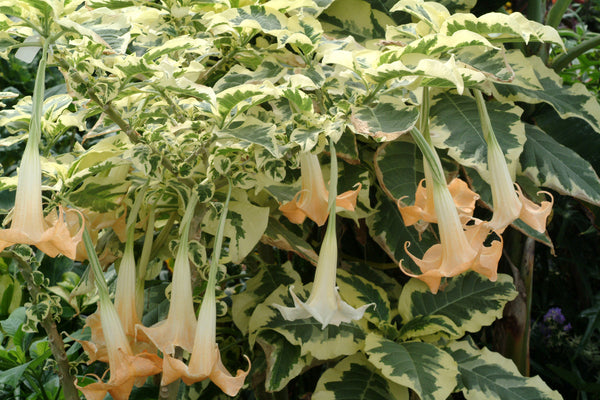
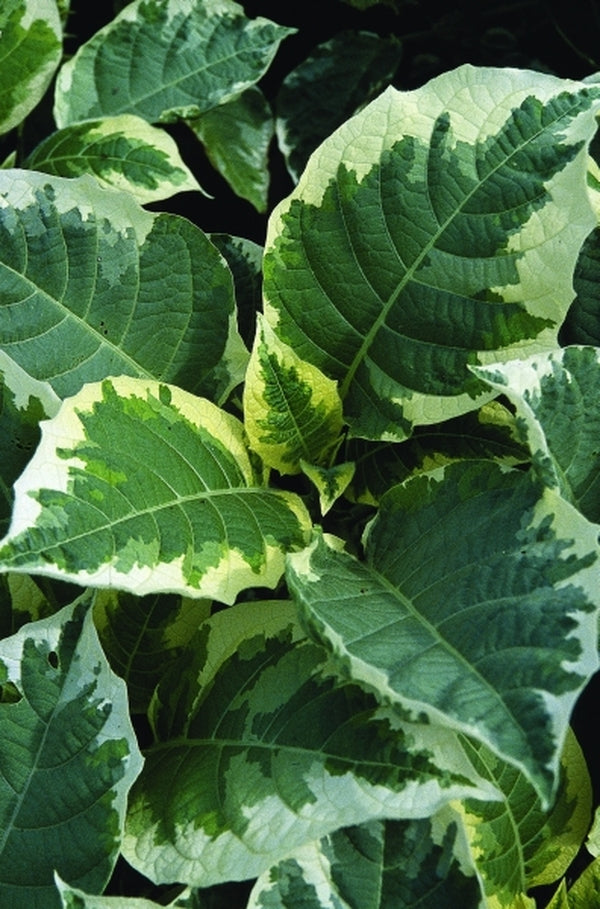
-
Related Articles
-
Other Attributes
Genus: Brugmansia
Flower Color: White/Cream
Leaf Color: Green , Variegated , White/Cream
Container Role: Thrillers
Garden Themes: Cottage Garden Plants , Night Gardens , White Garden
Other: Cut Flower Plants , Deer Resistant Plants , Fragrant Flowers , Giant Plants , Hallucinogenic Plants , Pollinator Plants , Medicinal Plants , Rabbit Resistant Plants , Salt Tolerant Seaside Plants , Tropical Looking Plants , Colored Foliage , Patterned Foliage , House Plants

